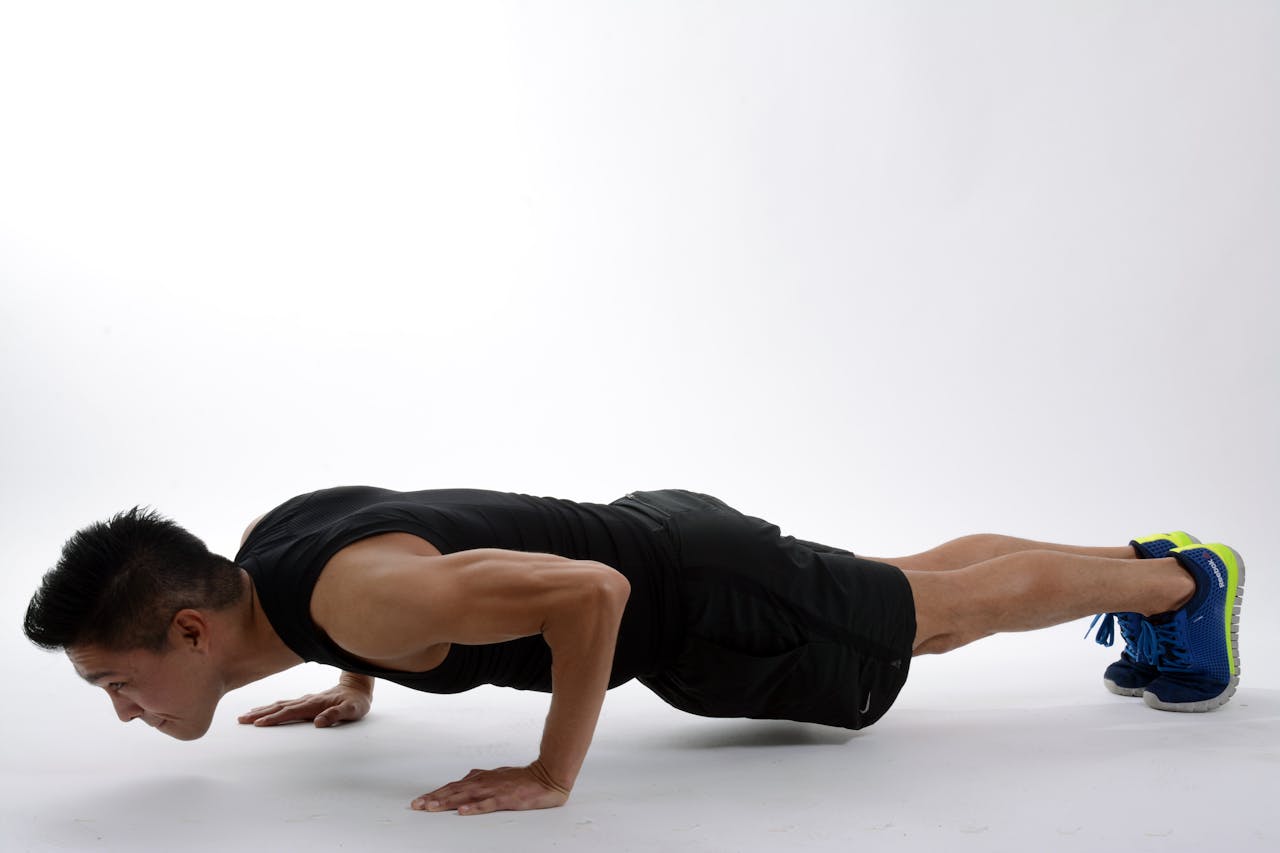Whether you’re new to exercise or returning after a break, creating a fitness routine that sticks is the key to long‑term health and well‑being. In this guide, you’ll learn how to set realistic goals, design balanced workouts, and build habits that make fitness a natural part of your lifestyle.
Why Fitness Matters
Regular physical activity brings far more benefits than just looking good:
- Improved Mood & Energy
Exercise releases endorphins, reducing stress and boosting mental clarity. - Better Sleep Quality
Active days lead to deeper, more restorative sleep. - Enhanced Longevity
Consistent movement lowers the risk of heart disease, diabetes, and other chronic conditions. - Stronger Body & Mind
Strength training and flexibility work build resilience both physically and mentally.
Step 1: Define Your “Why” and Set SMART Goals
Before jumping into workouts, ask yourself:
“Why do I want to exercise?”
“What change am I hoping to see in 4, 8, or 12 weeks?”
Use the SMART framework to turn your motivations into actionable goals:
- Specific: e.g., “I want to run 5K without stopping.”
- Measurable: “I’ll track my distance and pace weekly.”
- Achievable: “I’ll start with walk‑run intervals.”
- Relevant: “This will improve my cardiovascular health.”
- Time‑bound: “I’ll hit this goal by September 30.”
Step 2: Balance the Four Pillars of Fitness
A comprehensive routine includes four key components:
- Cardiovascular Training
- Activities: Running, cycling, swimming, brisk walking
- Benefits: Heart health, lung capacity, calorie burn
- Frequency: 3–5 times per week, 20–45 minutes per session
- Strength Training
- Activities: Bodyweight exercises, resistance bands, free weights
- Benefits: Increased muscle mass, stronger bones, metabolic boost
- Frequency: 2–4 times per week, covering all major muscle groups
- Flexibility & Mobility
- Activities: Yoga, dynamic stretching, foam rolling
- Benefits: Improved range of motion, injury prevention, posture
- Frequency: Daily or at least 3 times per week, 10–15 minutes
- Recovery & Rest
- Activities: Sleep, active rest (light walks), massage or self‑myofascial release
- Benefits: Muscle repair, hormonal balance, mental rejuvenation
- Frequency: 1–2 full rest days per week; nightly sleep of 7–9 hours
Step 3: Structure Your Week
A sample weekly plan might look like this:
| Day | Activity |
|---|---|
| Monday | Strength Training (Upper Body) |
| Tuesday | Cardio (Interval Run or Cycling) |
| Wednesday | Strength Training (Lower Body) |
| Thursday | Flexibility & Mobility (Yoga Flow) |
| Friday | Strength Training (Full Body) |
| Saturday | Cardio (Endurance Ride or Swim) |
| Sunday | Rest or Active Recovery |
Tip: Switch intensity and modalities to prevent plateaus and boredom.
Step 4: Track Progress and Stay Accountable
- Use a Fitness App or Journal: Log workouts, weights, reps, and cardio metrics.
- Take Photos and Measurements: Monthly check‑ins help you see non‑scale victories.
- Find an Accountability Partner: Workout buddies or online communities keep you motivated.
- Set Mini‑Challenges: Monthly goals (e.g., “Hold a plank for 2 minutes”) to maintain momentum.
Step 5: Prioritize Nutrition and Hydration
Your workouts are only as effective as your fuel:
- Balanced Macronutrients: Aim for lean protein, complex carbs, and healthy fats.
- Pre‑Workout Snack: A banana or yogurt 30–60 minutes before training for energy.
- Post‑Workout Recovery: Protein and carbs (e.g., a shake or chicken with rice) within 1 hour to support muscle repair.
- Stay Hydrated: Drink water consistently throughout the day—aim for at least half your body weight in ounces.
Common Pitfalls & How to Avoid Them
- Overtraining: Listen to your body. Persistent soreness or fatigue means dial back.
- Skipping Warm‑Ups/Cool‑Downs: Always spend 5–10 minutes preparing and recovering.
- All‑Or‑Nothing Mindset: Missed a workout? Get back on track tomorrow—don’t give up entirely.
- Ignoring Mobility: Squeeze in short stretching sessions to prevent stiffness.
- Unrealistic Expectations: Progress takes time. Celebrate small wins and stay patient.
Advanced Tips for Continued Growth
- Progressive Overload: Increase weight, reps, or intensity gradually to challenge your body.
- Periodization: Cycle through phases (e.g., strength focus, hypertrophy focus) every 4–6 weeks.
- Cross‑Training: Incorporate different sports or activities—like rock climbing, dance, or martial arts—to develop new skills and avoid burnout.
- Mind‑Body Connection: Practice mindfulness or meditation to enhance focus during workouts.
Conclusion: Make Fitness a Lifelong Habit
Building a sustainable fitness routine is less about quick fixes and more about consistent, balanced effort over time. By setting clear goals, structuring your workouts, tracking progress, and listening to your body, you’ll create a program that not only transforms your physique but also boosts your confidence, health, and quality of life.
Remember: the journey is personal. Celebrate every step forward, learn from setbacks, and enjoy the process of becoming the strongest, healthiest version of yourself.
Embark on your fitness journey today, and watch how small, consistent actions lead to remarkable changes over time.



